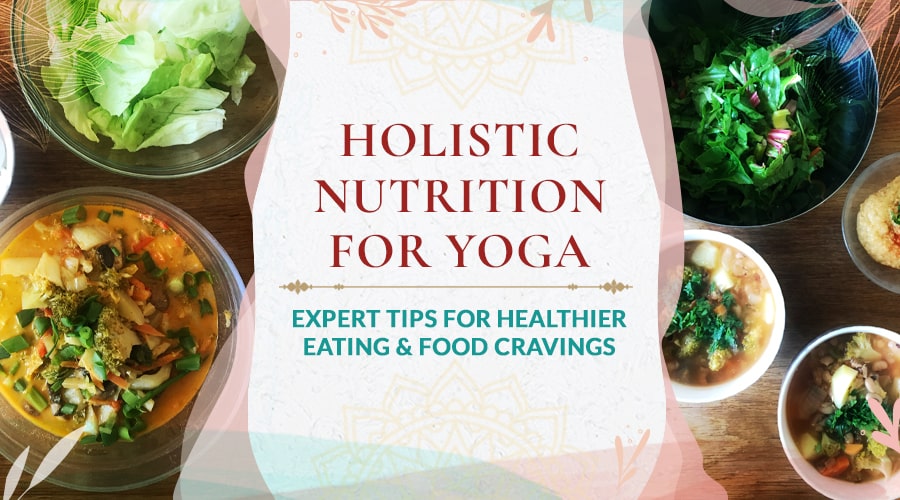We all know that familiar feeling of a craving: a mild hunger pang, some discomfort, and the worrying thought of whether to eat or suffer through it. Whether you’re a trained holistic nutritionist like me or a yoga practitioner starting your first day of dieting, maintaining heathy eating habits is by no means easy.
Usually, the answer is a quick bite of something comforting, sweet, fast, and immediately available. It brings about 20 minutes of relief, maybe even a dopamine rush and a temporary high, followed by hunger, stomach cramps, and eventually, feelings of sleepiness and a mood slump. This type of hunger problem-solving disrupts our focus, leads to overeating at the following meal, and, in the long run, an unhealthy lifestyle which affects our practice, career, and personal lives.
Regardless of how experienced or disciplined you are, attaining fitness and health goals through yoga doesn’t happen overnight. Fortunately, a holistic nutrition or yoga health coach can make this process a whole lot easier with tried, tested, and tailored tips that can improve your gut health, immune system, and overall well-being.
Read on to learn about the best fats, sugars, and snacks to fight cravings, as well as daily holistic nutrition tips to create a healthier, more balanced lifestyle for yourself or your students.
Why Is Holistic Nutrition so Important for Yoga Practitioners?
As a holistic nutrition coach at Arhanta Online Academy, students often ask why mindful eating matters so much on the mat. My answer is always the same; just like yoga helps unite breath with movement to strengthen our physical and emotional well-being, holistic nutrition works to support those same goals through diet and lifestyle changes.
Without adequate protein, iron, magnesium and more from whole foods and organic veggies and fruits, our muscles lack the strength to support our bodies during challenging poses. Processed snacks may spike energy briefly but eventually lead to crashes, diffusing focus. And when digestion suffers from rushed meals or unhealthy foods, so does the mind-body harmony we work hard to cultivate.
Following a holistic diet personalized to your unique biology, dosha type, and lifestyle is therefore essential for nourishing vital organ health, balanced emotions, and promoting a resilient well-being—both on and off the yoga mat.
Facts about Fats: Which to Embrace & Which to Avoid
In the 80s and 90s, fats were considered the enemy of everyone and everything. Many health problems, including heart disease, obesity, and skin issues, were blamed on fats.
What was the proposed solution?
Food and beverage companies began to make everything low-fat and replaced fats with sugars, syrups, starches, refined carbs, and preservatives to maintain flavor and shelf life. However, this didn't work out well; as we now know.
Just like sugar, there are good, healthy fats and bad ones we need to avoid. It's crucial to our health to consume fats, but the secret is to be mindful of the type of fats you eat and the quantity.
Let’s clear up the good fats from the bad.
Good Fats
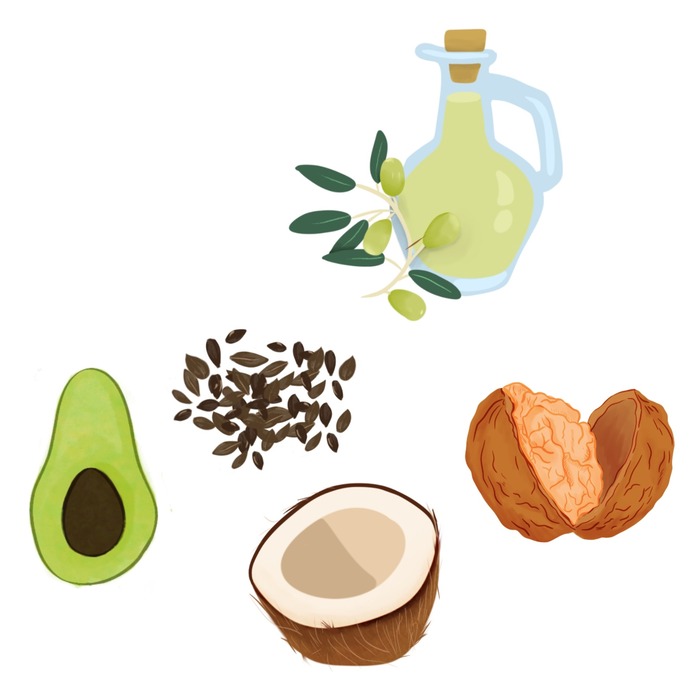
1. Extra Virgin Olive Oil
If you’re concerned about calories when choosing good fats, even the higher intake levels of extra virgin olive oil seen in the Blue Zones have been shown to have positive health outcomes for the heart and overall physical well-being. However, don’t overdo it. As with everything, moderation is crucial.
2. Omega-3 Fatty Acids
High-quality omega-3 fatty acids from fish and algae possess anti-inflammatory properties and are amazing for brain health and mood regulation. Good sources include flax seeds, fish, and shellfish. However, be cautious of heavy metals like mercury, arsenic, and cadmium which leak into watery environments from industrial sources and are ingested by the fish we eat.
3. Omega-6 Fats
Maintaining a good ratio of omega-3 to omega-6 fats (1:2 or 1:4) is important. Omega-6 fats from sources such as walnuts, avocados, tofu, eggs, and certain fish can be greatly beneficial in a balanced diet.
Bad Fats
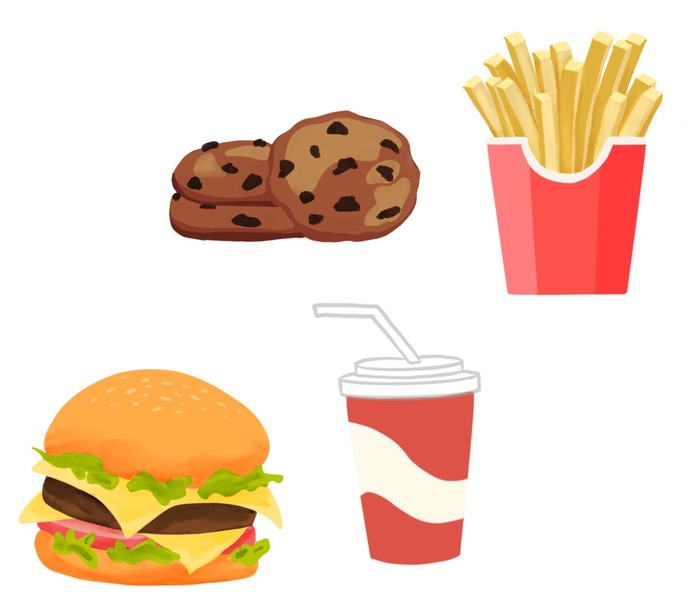
1. Hydrogenated & Trans Fats
Hydrogenated and trans fats should be completely avoided, as they are pure poison. These harmful fats can be found in most ultra-processed foods like French fries, chips, and cookies, as well as processed spreads like margarine.
2. Saturated Fats
Saturated fats should only be consumed in small amounts. Sources of saturated fats include meats, processed meats, coconut and palm oil, tropical oils, dairy products, and derivatives. While we do need them, it's important to get them from real whole foods. Keep in mind that we are all different when it comes to the kinds of fats we can consume.
One thing which I cannot emphasize enough is that we all have different genetic profiles and predispositions that affect how we use and maintain cholesterol, store fat, and gain weight. While adhering to these general nutrition guidelines, be sure to also observe how different foods affect you and learn from those experiences.
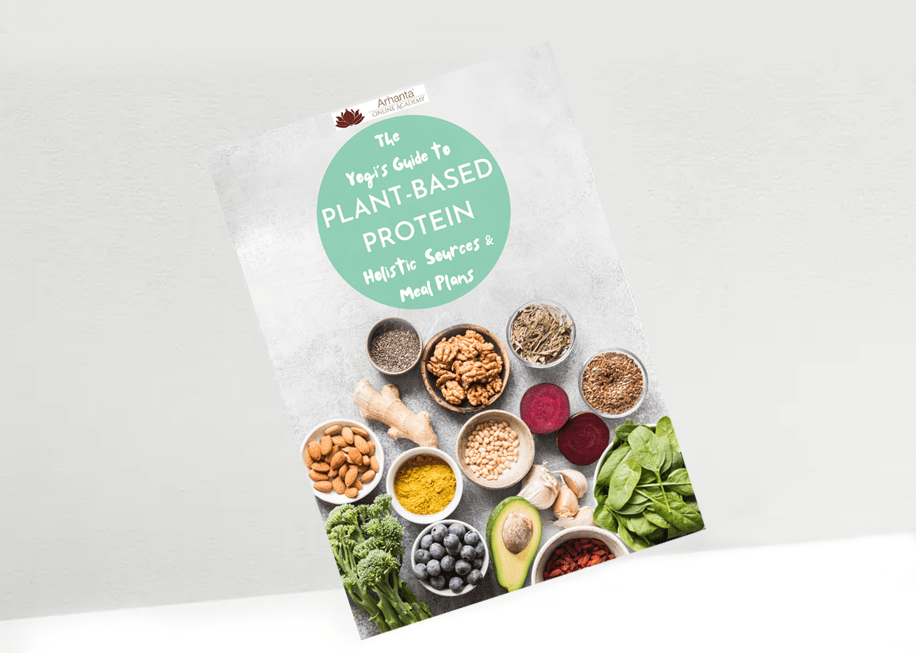
Get your free copy of the Yogi's Guide to Plant-Based Protein E-book.
Holistic Nutrition 101: Expert Tips to Improve Your Health, Well-being & Yoga Practice
When it comes to eating healthy, the smallest steps can lead to big changes. Embracing good fats and nutritious sugars while also being more mindful about what and when you eat can have a lasting impact on your health and overall progress as a yoga teacher or practitioner. Below, I share easy holistic nutrition tips for beginners that you or your students can follow to maintain a healthier lifestyle, no matter how busy your schedule is.
Satisfying Your Sweet Tooth
How can you satisfy sweet cravings healthily? This is the billion-dollar question. Unfortunately, there isn’t a simple answer, and if you’re looking for a list of foods that are guaranteed to work for everyone, you won’t find it here.
As a holistic nutrition coach and restaurant owner, I've struggled with my own sugar and junk food cravings since we opened our doors. I love desserts, and I understand that many of my clients do too. So, I've always been on a quest to create a dessert that brings me pleasure in the moment without any guilt afterwards.
I realized that most people don't want to give up the simple, sugary, childlike pleasure of cakes and desserts. Instead, they would rather indulge in something unhealthy but "real" occasionally than have a healthier dessert more frequently. However, I've also witnessed people gradually compromise their health due to excessive sugar consumption.
So, I set myself a mission to search for and create desserts that fit with my health-focused approach. This journey led me down the rabbit hole of scientific research on how to satisfy sweet food cravings while still making conscious choices about what, how, and when we consume it. Here are 12 proven ways I've found can help silence those sugary cravings:
- We need to let go of the familiar taste of white sugar treats if we want something sweet every day. Instead, we should embrace the rustic, wholesome malty sweetness of alternative sweeteners and dried fruits. They offer a more nutritious and complex package beyond simple, sweet pleasures that come with detrimental consequences. This is especially important when it comes to hyperactive kids.
- Fiber is a crucial component of healthier sweets. More fiber means slower absorption and fewer glucose spikes. Some of my favorite fiber-rich foods include pears, plain popped corn, and dark chocolate.
- Consume vinegar before or add lemon juice or cinnamon to your sweet treats as they can help regulate blood glucose spikes.
- Consume natural sweets such as dried fruits like dates, prunes, or apricots instead of candy or chocolate.
- When indulging in chocolate, choose high-quality, bitter dark chocolate rather than overly sweetened milk chocolate with milk powder and bad fats. You will learn to love it!
- Instead of store-bought sweetened yoghurt with fruit-flavors, create your own fruity-yoghurt with fresh fruits, Greek yoghurt, and throw in some nuts for added nutrition.
- Share your dessert with friends and family. You'll still enjoy the pleasure but consume less of it. Portion control matters.
- Explore healthy(er) sweeteners like malt, date syrup, concentrated apple juice, monk fruit, stevia, erythritol, sweet potatoes, and dried fruits when baking or making a dessert.
- Where possible, avoid artificial sweeteners, but when you do use them, do so sparingly.
- If you decide to indulge in a traditional dessert, choose options made with lower fat content, whole grain flours, and fruit-based ingredients over custard, cream, and white flour-based ones.
- Personally, I only buy chocolate bars made with dried fruits, nuts, and superfoods. They can be very satisfying when the desire strikes.
- Minimize your consumption of high-fructose syrups. These syrups are typically found in processed and ultra-processed foods like preservatives and flavor enhancers. In high doses, they can contribute to issues like fatty liver disease and inflammation.
Additionally, try to identify the situations that trigger your sugar cravings and be more mindful of them. If you eat out a lot, seek out places that offer healthier dessert options. Remember, it's a journey of understanding and making mindful choices when it comes to satisfying your sweet tooth.
Fighting Food Cravings
The term "snack" can be a trigger for serious holistic nutritionists; and I agree that we should not snack between meals for our metabolic health and microbiome quality. Repeat this to your students, friends, and family.
However, it can be wise to have a healthy snack that is part of a planned meal, rather than an emotionally triggered situation that often leads to overeating. Here are my favorite healthy snacks to stop food cravings when you are not hungry, especially before a vigorous yoga class:
1. Legume Hummus
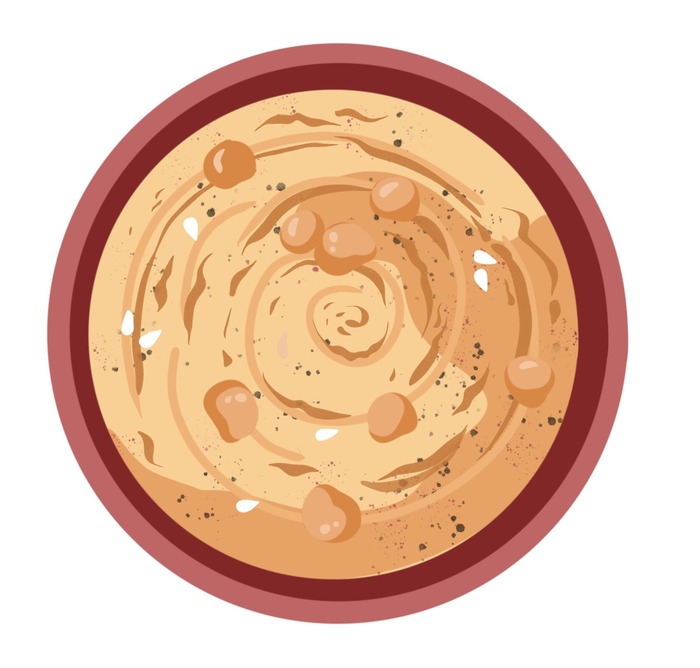
This is a superstar of every snack Olympics because it contains good fats, protein, a lot of fiber, and a ton of micronutrients if you use good tahini. Any kind will do, and it can be prepared in just 3 minutes. Serve it with veggies before or after a yoga class, and I promise you will love it!
2. Olives & Fermented Vegetables
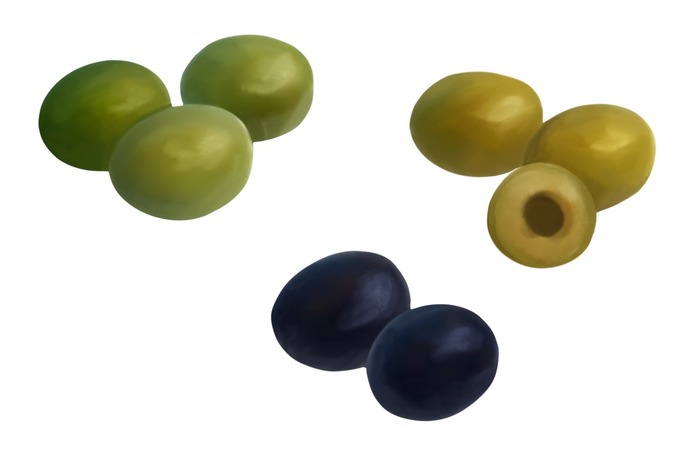
Rich in flavor, probiotics and good fats, olives are the perfect snack to curb food cravings. Along with other fermented vegetables like kimchi, these snacks last forever in the fridge and are very nutritious and filling. Just be mindful not to overeat.
3. Crunchy Veggies & Pinzimonio
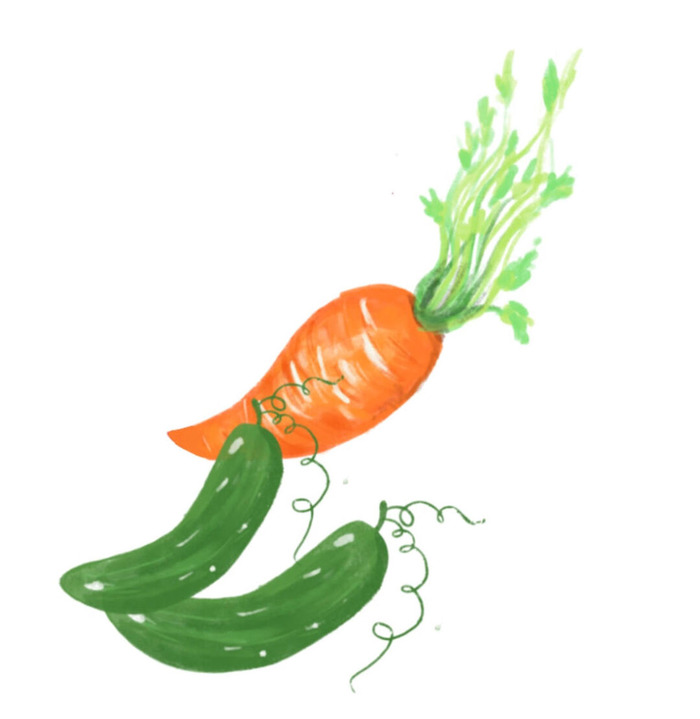
Cut celery sticks, carrots, fennel, cucumber, peppers, or any other crunchy veggies into small sticks. For the pinzimonio, mix good extra virgin olive oil in a little glass with vinegar, salt, and pepper. Dip the veggies in the mixture and enjoy it as a quick, on-the-go snack.
4. Gluten-Free Mixed Seed Crackers
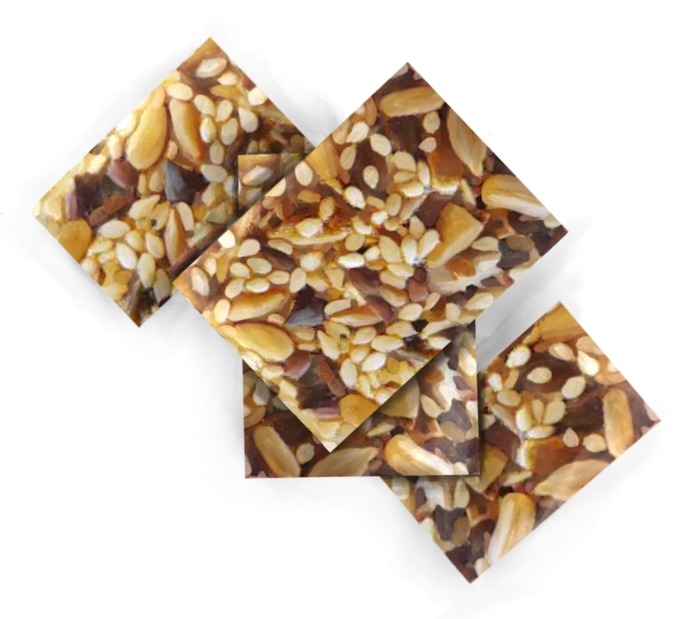
Mixed seed crackers are packed with a range of essential nutrients, including fiber, healthy fats, protein, vitamins, and minerals. They are particularly rich in fiber, promoting digestive health and contain omega-3 fatty acids and monounsaturated fats which contribute to heart health and brain function. Choose a brand you like, ideally with low salt, and always keep them in your yoga bag or in the cupboard.
5. Mixed Seeds & Nuts
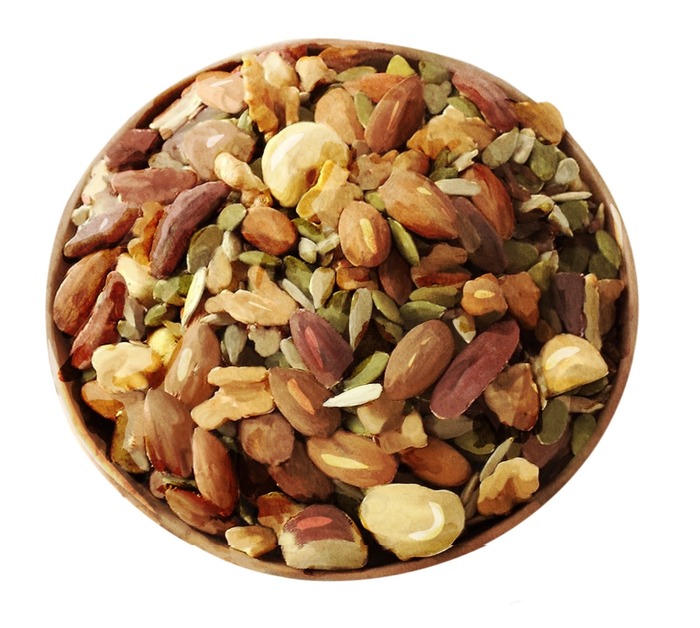
Mixed seeds and nuts are another great snack to control food cravings, especially if you have an active and busy lifestyle. Fiber-rich seeds like pumpkin and sunflower are great for digestion and help keep you full for longer, while almonds and walnuts are packed with protein, healthy fats, and antioxidants, which can promote heart health and boost energy.
The satisfying crunch is also a great addition to any meal. You can sprinkle them over salads, soups, stir-fries, or simply have a few spoons as a snack or appetizer before dinner.
As we mentioned before, science confirms that snacking is not ideal for our health, but sometimes life happens, and it's better to have a healthy snack while waiting for the meal than to create a nervous, tense, hypoglycemic, and confused atmosphere.
Maintaining a Healthy & Balanced Well-being
Eating too much processed and sugary foods and not enough fiber can cause your blood sugar levels to rapidly spike and crash. Overtime, this can result in an unhealthy glycemic curve, which can cause food cravings, fatigue, and more serious conditions like heart disease and insulin resistance.
To maintain a stable glycemic curve throughout the day and feel more balanced, I offer the following nutrition tips, supported by scientists and experts alike:
- Opt for savory, wholewheat, protein-rich meals that are not excessively large. If you can, include plenty of fiber which will fill you up while slowing down digestion and sugar absorption. Practicing yoga for digestion is another great way to improve your overall gut health.
- Don’t snack between meals, but if you have to, choose one of the healthy snacks suggested above.
- Use vinegar, lemon juice, or cinnamon in your meals as they can help regulate blood glucose levels and lower the glucose spike curve.
- Move a lot and have daily movement practice. It doesn’t matter whether it’s going to the gym, walking, practicing yoga, biking, or skateboarding, as long as you are MOVING.
- Prioritize sleep. This is VITAL in regulating hunger, hormones, food choices, and overall health and well-being. There are various foods you can eat for better sleep, as well as yoga poses that promote rest and relaxation before bed.
- If, like me, you love sweets, opt for low-sugar desserts that are high in fiber and protein, such as a good vegan carrot cake, fruit and yogurt or fruit-based ice creams.
- Make time for meditation. Taking a few minutes out of your day to clear your head, find peace, and work on self-discipline will leave you feeling emotionally lighter and mentally stronger in the face of cravings.
- Avoid eating sweets and simple carbohydrates after dinner or late at night, as insulin production tends to decrease during this time.
One important aspect to consider is the situations where you find yourself reaching for food out of habit (watching Netflix) or in response to emotional discomfort (burnout, anxiety or stress). This is challenging, but awareness helps tremendously and can lead to making better food choices.
Final Thought
Fighting food cravings can feel like a constant battle between our minds and bodies. However, by learning how to control these urges and consciously select what we consume, we can regain control and gradually enhance our overall well-being.
It is important to remember that lifestyle changes require time and patience. Start incorporating these easy nutrition tips into your daily routine, and after time, you will become more attuned to your body's needs rather than its wants.
If you're seeking further guidance or have a keen interest in health and nutrition, I highly recommend joining my online Holistic Nutrition Course. This course delves into the science of holistic nutrition and provides invaluable lessons to help you or your students become healthier and more energetic individuals.

Get your free copy of the Yogi's Guide to Plant-Based Protein E-book.

